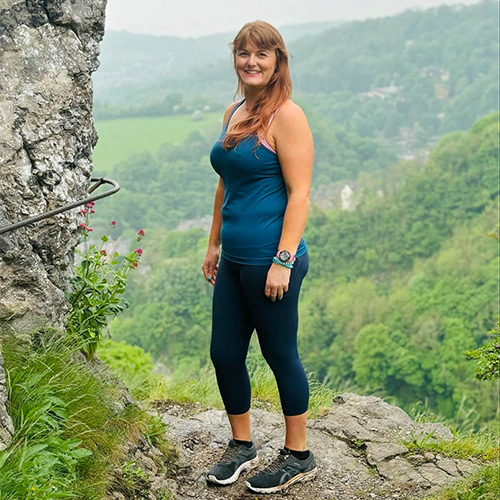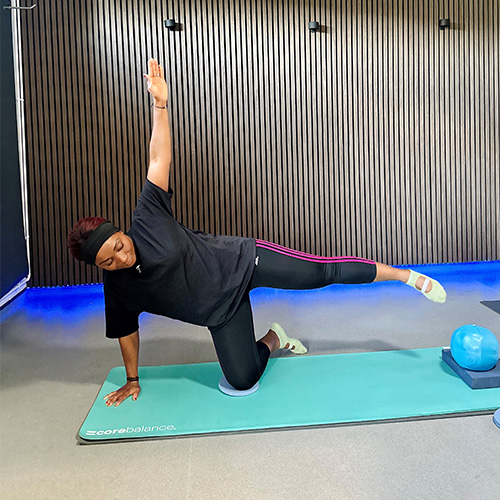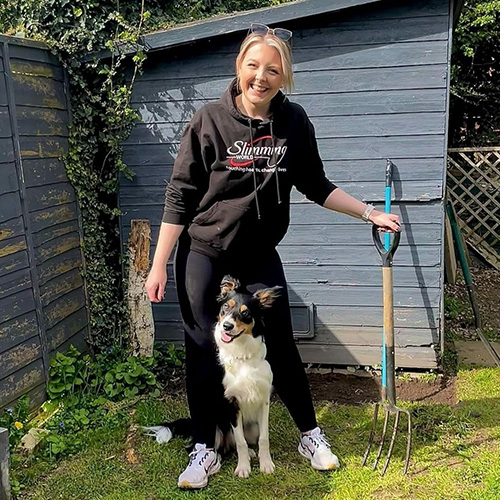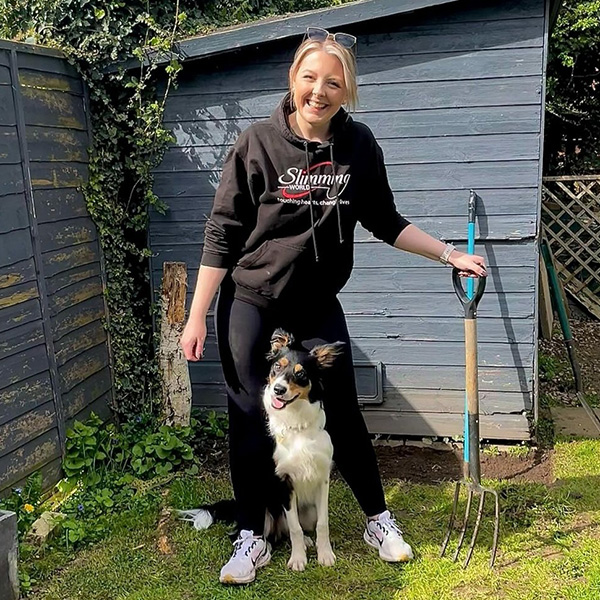Regular physical activity can benefit your health and wellbeing in some pretty amazing ways, including:
- improving sleep
- supporting mental health
- strengthening bones, joints and muscles
- improving shape and posture
- reducing your risk of heart disease, type 2 diabetes and some cancers
Any exercise that gets you moving more (and more often) will help you begin to reap those rewards. If you’re just starting out, focus on finding an activity you enjoy, to help you get going – and keep going.
In the longer term, building these five active habits into your weekly routine will set you up for good all-round health and fitness.
Slimming World’s 5 active habits
1. Sitting still less
Why is it important?
Even for very fit people, sitting still for long periods of time can increase your risk of poor health, including type 2 diabetes and high blood pressure.
Get-started ideas:
- break up lengthy sofa sessions with a two-minute walk, stretch or wriggle every 20 minutes
- walk around whenever you’re on the phone
- tackle the housework during ad breaks
- get up from your desk every 20 minutes for a loo break or to refresh the printer paper (well, someone has to!)
More on the blog: Why we should sit less
2. Everyday movement
Why is it important?
Moving more during the day helps you maintain your weight loss, reduces health risks and keeps your body functioning as it should – and the more you do, the greater the benefits.

Slimming World Consultant Heidi experienced the mood-boosting benefits of getting out in the outdoors after an afternoon walk with her mum.
Get-started ideas:
- take the stairs instead of the lift
- park a bit further away from the supermarket entrance
- walk rather than drive the kids to school
- taking the dog out for an extra 10 minutes a day
- Get off the bus one stop earlier
More on the blog: Discover the brilliant benefits of everyday movement
3. Balance and flexibility
Why is it important?
Working on your balance and flexibility helps you to maintain confidence and independence as you get older. It increases your co-ordination, boosts muscle strength, improves posture, eases aches and pains, and lowers the risk of falls and injury.

Slimming World member Elsie has lost 1st 4½lbs so far and has been taking Pilates classes to help with her back and knee pain.
Get-started ideas:
- get up from your chair without using your arms
- practise standing on one leg for 60 seconds… without falling over!
- follow an online yoga workout or sign up for a Pilates class
- dance around your kitchen or while you’re doing the housework
More on the blog: How to build balance and flexibility
4. Moderate-intensity cardio
Why is it important?
It gets your heart pumping, your lungs and big muscles working, and can help to lower blood pressure and cholesterol. Plus, it can reduce the risk of type 2 diabetes, some cancers, cognitive decline and early-onset dementia.

Tabitha has made a splash with her fitness journey by going open water swimming in Copenhagen.
Get-started ideas:
- do some vigorous vacuuming
- go for a brisk walk
- head to the pool for a swim
- dust off your bike for a cycle
- limber up for a gentle jog
More on the blog: Unlock the benefits of moderate-intensity cardio
5. Building strength
Why is it important?
As well as helping to keep you mobile and strong as we get older, muscle strength helps maintain your metabolic rate (how quickly we burn calories) – which is very useful when you’re working hard to manage your weight!

Tending to your green spaces is a great way to tone and strengthen muscles. Slimming World Consultant Katie has made the most of the sunny weather by getting out in her garden.
Get-started ideas:
- heavy gardening, such as digging or pushing a loaded wheelbarrow
- carrying weighty shopping bags (or small children!)
- wheeling a wheelchair around
- weightlifting
- circuit training
More on the blog: Why it’s good to be strong
If you’re planning to start a new exercise programme, we recommend you check with your GP first – especially if you have an existing health condition, such as high blood pressure, diabetes or asthma. If you’re pregnant, check the suitability of the exercise with your midwife.



